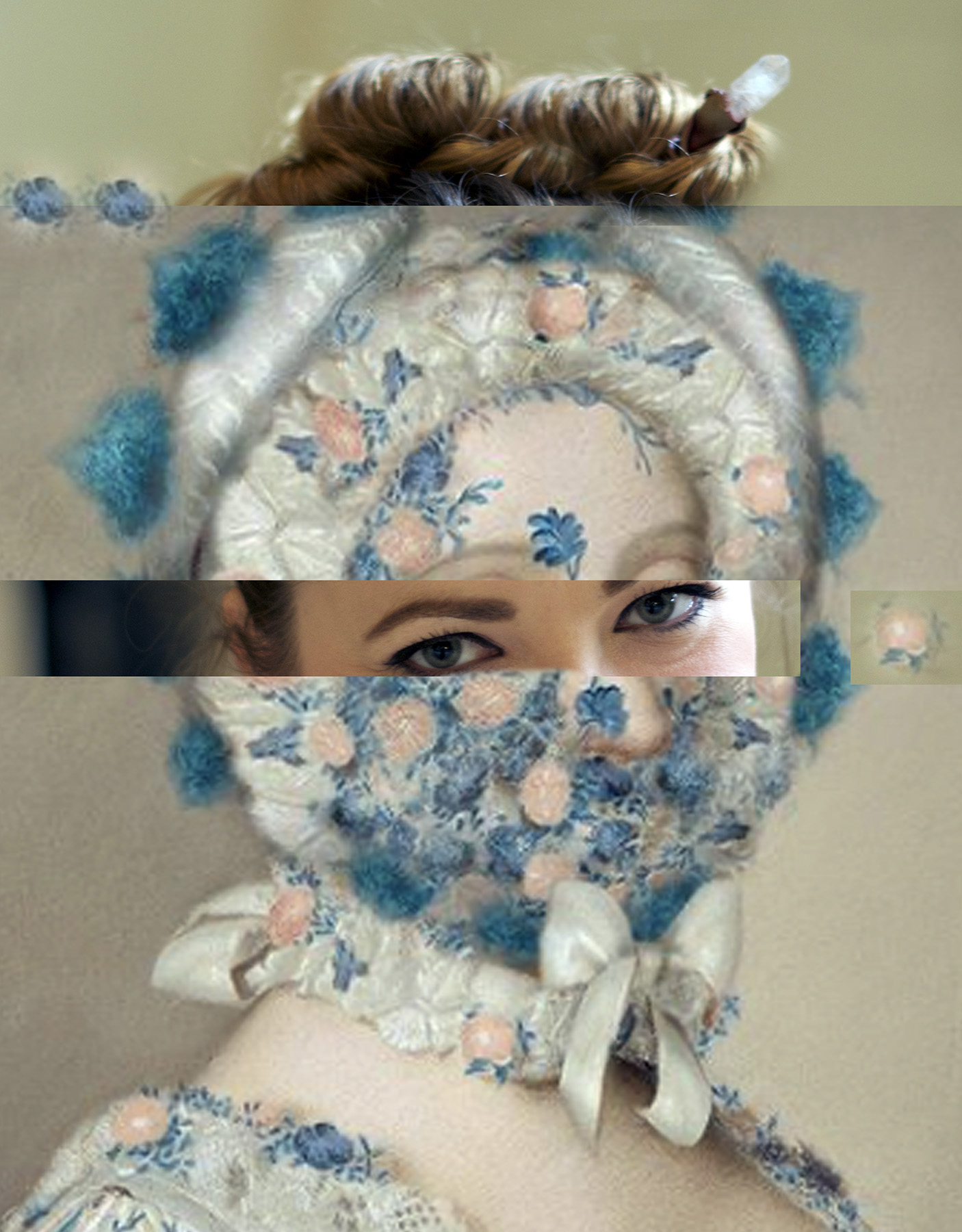Something curious and creative today: a German artist’s work, created long before Covid-19 entered our lives, that is focussed on masks. I might have been particularly attracted to his digitally altered portraits because of my own work in a similar domain (I wrote about the mix here.) I believe though, that there should be general delight in his compositions, because they are witty, technically accomplished, and certainly exhibit fluent bending of art historical styles. They also make you think about – or they made me think about – the role that facial expressions play in deciding whether a portrait is outstanding or middling at best.


Volker Hermes, born in 1972, as it turns out just a few kilometers from my childhood village, decided to reinterpret classical portraits from the historical archives by obscuring the faces, sometimes partially, sometimes beyond recognition. He uses what he finds in the portraits themselves, parts of the jewelry, accessories, hair, or clothing to create the mask. It directs our attention first to the now invisible face, and subsequently, perhaps, to the remainder of the figure – symbolic aspects within the dress-up, gestures, background.
His series Hidden Portraits displays enormous range, as best seen in this link, that will give you an overview. Do check it out, one portrait is more inventive than the next.


Good portraiture depends on both, capturing a likeness, however fleeting, and also an essence that reveals more than a mirror. Neither is available to the viewer if the face is obscured, leaving us with nothing but style and baubles, status symbols or flower code, ultimately nothing but a husk. Something that might or might not have been great art, depending on what the face accomplished for the viewer, is reduced to costume design, with the stroke of imagination and photoshop. Well done.


In real life we have probably all grappled with the problems that arise when faces are partially obscured. A person’s face readily exposes their identity, gender, emotion, age, and race, all of which are harder to discern when the face is covered by a mask. Not only are we worse at recognizing faces; the way we usually perceive them, holistically, is also disrupted, which leads to qualitative changes in person perception. It can interfere with social interactions, for sure.
Hey, you might say – and I’d join you in a second – at least masks game those intrusive facial recognition systems, which use algorithms that analyze our facial geometry – disrupted when mouth and nose are obscured.
I wish.
“…these types of errors are likely temporary, as companies that produce facial recognition technology are racing to update their algorithms to better adapt to face coverings. As Recode previously reported, firms were already touting their algorithms’ ability to account for masks as early as February, and Panasonic indicated it had cracked the mask problem even earlier. Since the pandemic started, a slew of facial recognition companies, including UK-based Facewatch, California-based Sensory, and the China-based firms Hanwang and SenseTime, have all begun to tout their ability to recognize people wearing masks.” (Ref.)


Well, masks do protect us from infection. Grateful for that. Although even that can backfire, wouldn’t you know it. The mask-induced, remarkable decline in active cases of the flu this year has scientists scratching their head. The dearth of data makes it difficult to predict what strains should be included in the vaccine preparation for next year, making them likely much less effective.
Looks like we might be wearing masks for years to come….. might as well embellish them in ways suggested by Volker Hermes.
Let’s have a rousing start into this week with Verdi’s Un Ballo in Maschera.
